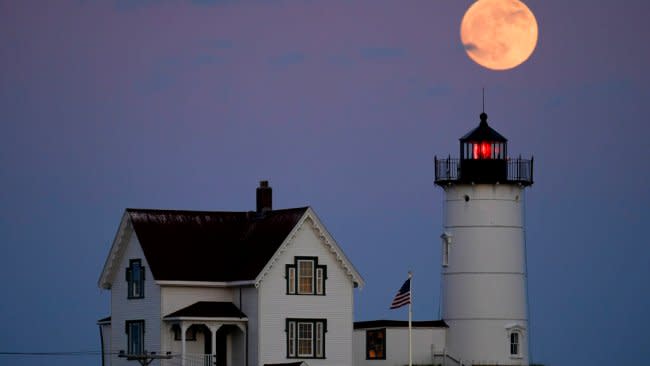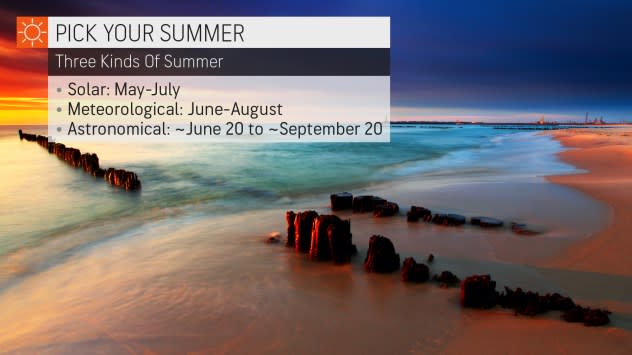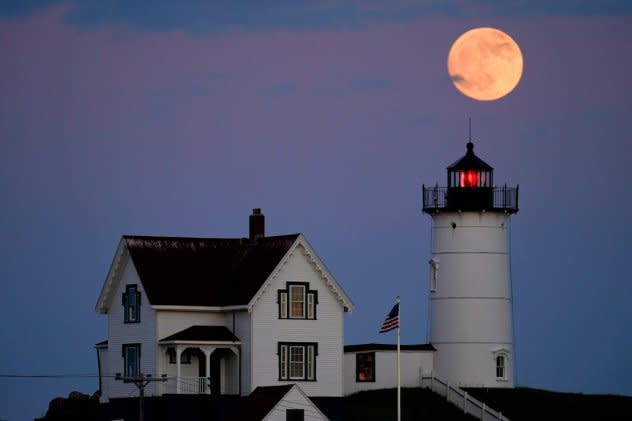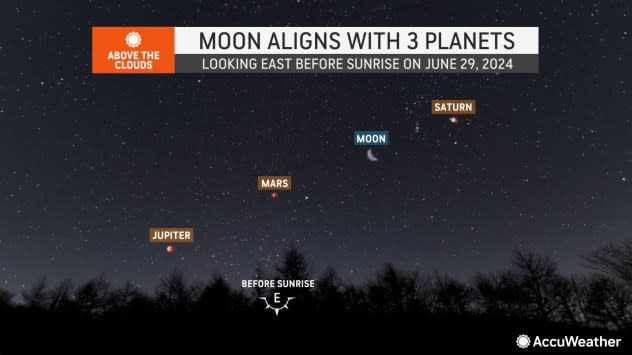Earliest solstice in 228 years to precede planetary alignment in June sky
June's warm, summery nights are the shortest of the year across the Northern Hemisphere, but there will still be plenty of astronomical sights to look for after the sun has set, especially during the second half of the month.
Some people are touting the parade of planets on June 3, when six planets will be in the same area of the sky. However, only two of them will be visible to most observers. An even more impressive cosmic alignment is in the offing later in the month when more planets can be seen with the crescent moon.
From views of the planets to the Strawberry Moon, here are the top three astronomy events to look for throughout the month.
Astronomical summer will kick off on the solstice, which takes place at 4:50 p.m. EDT on Thursday, June 20. This comes nearly three weeks after the beginning of meteorological summer, which starts on June 1.
This year features the earliest summer solstice since 1796 when it occurred at 1:45 p.m. ET on June 20. On that day, there were only 16 states in the United States, and Neptune and Pluto had yet to be discovered.
 |
Summer is the longest season of the year, lasting 93 days, 15 hours and 52 minutes, concluding at 8:43 a.m. EDT on Sept. 22 on the autumnal equinox.
The second night of summer will give rise to a full moon, the first of four during the season.
 |
A waxing gibbous moon is seen as it rises near the Nubble Light, Monday, June 13, 2022, in York, Maine. (AP Photo/Julio Cortez) |
June's full moon is commonly called the Strawberry Moon as it is typically the best time of year to harvest strawberries across North America. Other nicknames include the Hot Moon, the Hatching Moon and the Birth Moon.
The best planetary alignment of the month will take place during the final weekend of June and will require people to wake up well before the first morning light.
The crescent moon will fall in line with Saturn, Mars and Jupiter in the eastern sky before sunrise on June 29. All four celestial objects are bright enough to see without a telescope, although a cloud-free sky will be necessary to spot the alignment.
 |
Stargazers who are up early and have a telescope may also be able to spot Uranus, which will appear between Mars and Jupiter, and Neptune, which glows faintly to the left of Saturn.
An encore of the alignment will unfold on June 30, and it could be even better on July 1, when the moon appears extremely close to Mars.
Want next-level safety, ad-free? Unlock advanced, hyperlocal severe weather alerts when you subscribe to Premium+ on the AccuWeather app. AccuWeather Alerts™ are prompted by our expert meteorologists who monitor and analyze dangerous weather risks 24/7 to keep you and your family safer.





